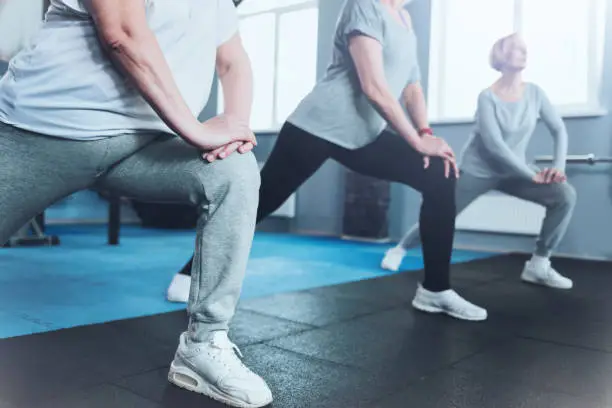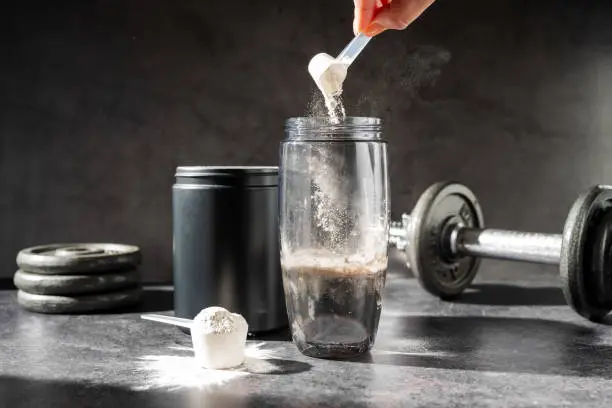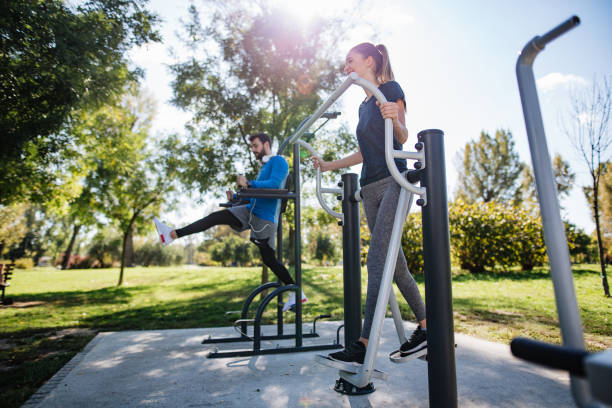Introduction
The Poliquin Step Up is a powerful leg exercise designed to target the Vastus Medialis Oblique (VMO), a crucial muscle responsible for knee stability. Named after Charles Poliquin, a world-renowned strength coach, this exercise is commonly used in rehabilitation, injury prevention, and athletic performance training.
Unlike regular step-ups, the Poliquin Step Up places greater emphasis on knee control and quadriceps activation. Whether you are an athlete, weightlifter, or someone recovering from a knee injury, this exercise can help strengthen your legs, improve balance, and reduce knee pain.

Muscles Targeted by the Poliquin Step Up
The Poliquin Step Up primarily focuses on the quadriceps, but it also engages several other lower body muscles.
1. Vastus Medialis Oblique (VMO) – Primary Target
- The VMO is the teardrop-shaped muscle inside the quadriceps near the knee.
- Strengthening this muscle helps prevent knee injuries, particularly ACL tears.
- A strong VMO improves squat performance, sprint speed, and jumping power.
2. Glutes & Hamstrings
- The glutes and hamstrings assist in stabilizing the movement.
- They help in hip control and balance, making this exercise great for athletic performance.
3. Calves & Ankle Stabilizers
- The calf muscles (gastrocnemius & soleus) control upward and downward motion.
- Ankle stability improves, reducing the risk of ankle sprains and imbalances.
Now that you know the muscles involved, let’s learn how to perform the Poliquin Step Up correctly.
How to Perform the Poliquin Step Up Properly
Performing the Poliquin Step Up with proper form is crucial to avoid injury and maximize results.
Step-by-Step Instructions
1. Set Up the Platform
- Use a 4-8 inch elevated platform (e.g., bumper plate or step).
- Stand with your feet hip-width apart, facing the platform.
2. Position Your Foot Correctly
- Place your working foot (lead leg) on the platform.
- Keep your heel slightly elevated and only the ball of your foot touching the surface.
3. Execute the Movement
- Push through the ball of your foot, keeping the heel off the platform.
- Extend your knee to fully straighten your leg while keeping your torso upright.
- Your back leg should remain straight, not pushing off the ground.
4. Lower Yourself with Control
- Slowly lower yourself back down with control.
- Avoid dropping your foot quickly—the eccentric phase is key for strengthening the muscles.
5. Repeat on Both Sides
- Perform 8-12 reps per leg, focusing on control and proper form.
Common Mistakes to Avoid
1- Pushing Off With the Back Leg – This reduces VMO activation.
Fix: The back leg should stay passive, and all the effort should come from the front leg.
2- Letting the Heel Touch the Platform – This minimizes VMO activation.
Fix: Keep your heel off the platform throughout the movement.
3-Leaning Too Far Forward – Poor posture can strain the knee.
Fix: Keep your torso upright and engage your core.
4-Dropping Too Fast on the Descent – You lose control and risk injury.
Fix: Lower yourself slowly for maximum muscle activation.
Benefits of the Poliquin Step Up
Why should you include this exercise in your workout routine?
1. Strengthens the VMO (Knee Stability Muscle)
- A strong VMO prevents knee pain and reduces ACL injury risk.
- Improves knee tracking and patellar alignment.
2. Improves Athletic Performance
- Enhances sprinting speed, jumping power, and agility.
- Ideal for football, basketball, soccer, and track athletes.
3. Reduces Knee Pain & Aids Rehabilitation
- Great for post-injury rehab and patellar tracking disorders.
- Helps correct muscle imbalances between the VMO and vastus lateralis.
Poliquin Step Up vs. Regular Step Up
| Feature | Poliquin Step Up | Regular Step Up |
|---|---|---|
| Knee Activation | High (VMO Focus) | Moderate |
| Quadriceps Focus | Maximum | Moderate |
| Glute Engagement | Lower | Higher |
| Balance Required | High | Moderate |
| Best For | Knee rehab, sprinting | General leg strength |
- Choose Poliquin Step Up if: You want to strengthen your knees, improve sprinting speed, or recover from injury.
- Choose Regular Step Up if: You want overall leg strength and glute development.
How to Incorporate Poliquin Step Ups into Your Workout
When to Perform This Exercise?
- Before Leg Workouts (for activation)
- After Squats/Lunges (as an accessory movement)
- On Recovery Days (for knee health)
Recommended Sets & Reps
- Strength Training: 4 sets of 6-8 reps per leg
- Muscle Growth (Hypertrophy): 3-4 sets of 10-12 reps per leg
- Rehabilitation/Knee Stability: 2-3 sets of 12-15 reps per leg
Conclusion
The Poliquin Step Up is a highly effective exercise for strengthening the VMO, improving knee stability, and enhancing athletic performance. Whether you’re an athlete, weightlifter, or someone recovering from a knee injury, incorporating this movement into your training can help you build stronger, injury-resistant legs.
By following proper form, avoiding common mistakes, and progressing gradually, you can maximize results and keep your knees healthy for years to come.
FAQs
1. How often should I do knee strength ups?
Perform them 2-3 times per week for knee rehabilitation or once a week for general strength.
2. Can beginners do Poliquin Step Ups?
Yes! Start with a low step height and no added weight until you build strength.
3. Should I do knee strength step-ups before or after squats?
It’s best to do them after squats since they are an accessory exercise.
4. What’s the best alternative to the Poliquin Step Up?
Try Peterson Step Ups, Spanish Squats, or Terminal Knee Extensions (TKEs).
5. Can knee strength step-ups help with knee pain?
Yes! By strengthening the VMO, this exercise reduces knee pain caused by weak quadriceps.



